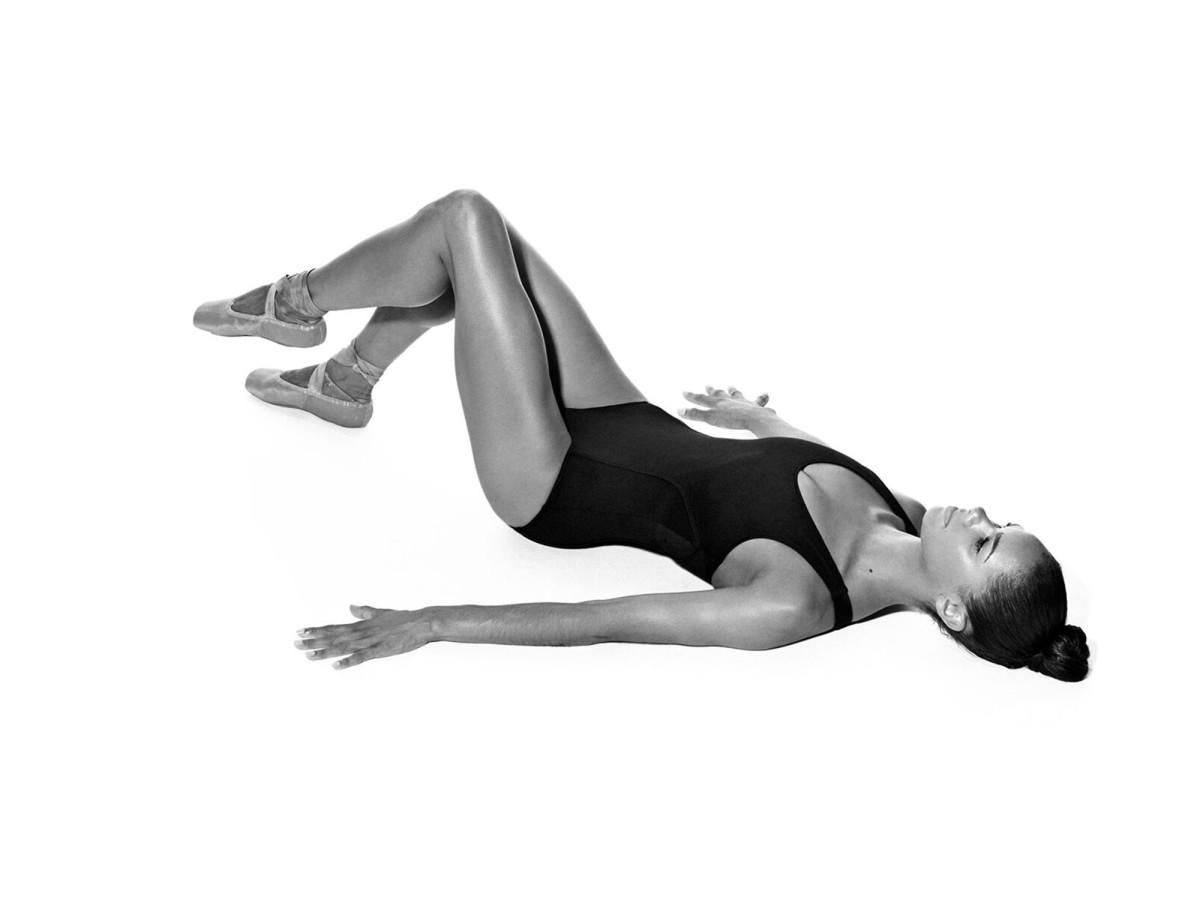Misty Copeland's guide to a 'Ballerina Body': Five exercises for a strong, sculpted physique

The typical physique of a ballerina from decades ago is no longer the standard today. That shift—from "childlike and brittle" to strong, healthy, feminine and curvaceous—is thanks in part to professional ballerina Misty Copeland, who, despite rejection and criticism because of her atypical body type, became the first African-American principal dancer of the American Ballet Theatre at age 24.
Now 34, Copeland has reflected on her journey and compiled the lessons learned along the way into her new, maiden health and fitness book, Ballerina Body: Dancing and Eating Your Way to a Leaner, Stronger, and More Graceful You.The book is divided into four parts: Mind, Motion, Meals and Mentors.
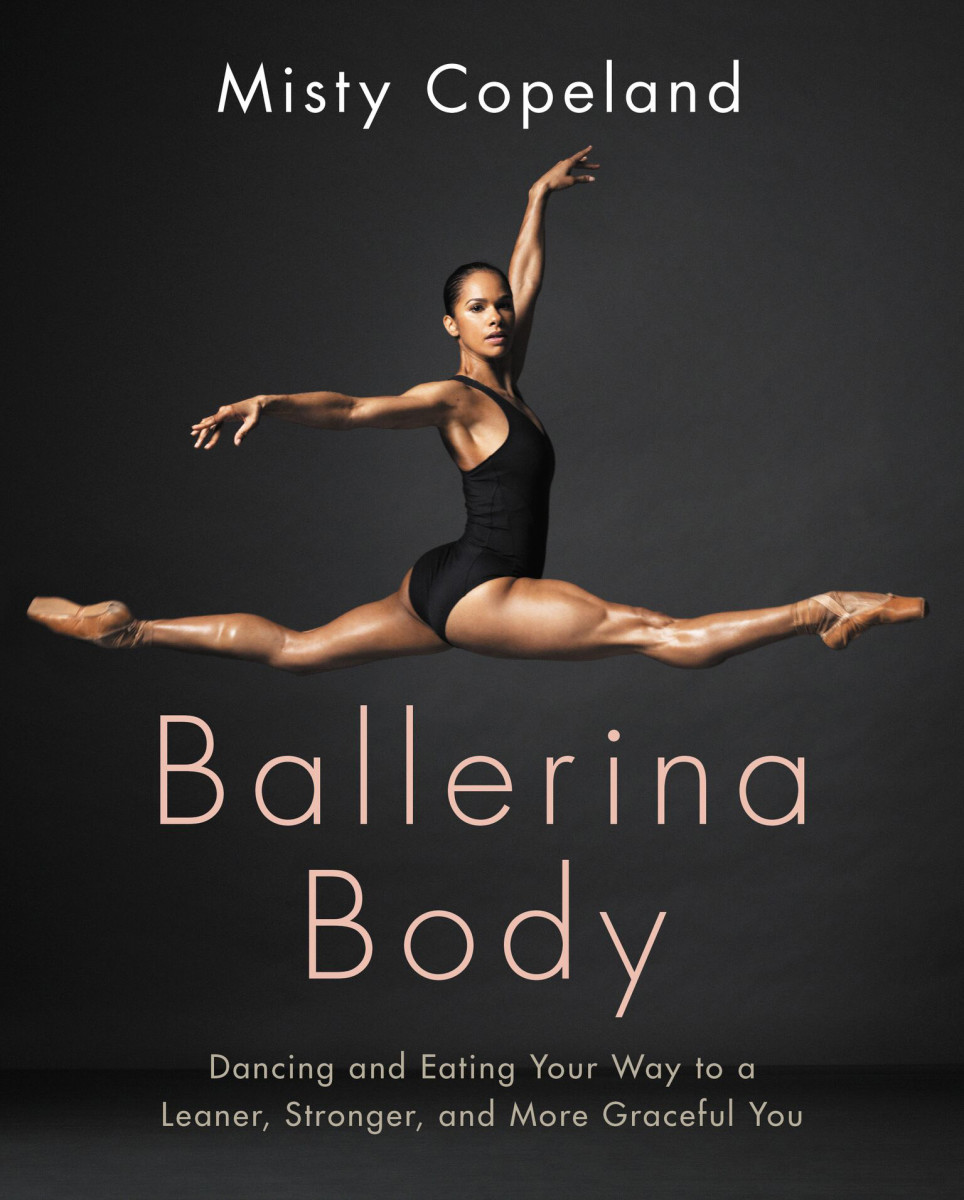
"There has been a shift in recent years in which women no longer desire the bare bones of a runway model. Standards have changed: what women do want is a long, toned, powerful body with excellent posture," Copeland says. From tips on finding motivation from within and inner peace, to meal plans, nutritional guidelines and workout routines, Copeland wants to help you achieve a sculpted figure and a healthy mind.
Below, Copeland shares five exercises and stretches that can help you maintain good posture (a key component of ballet dancing) and build flexibility, and with it, a "sexy fluidity and confidence" wherever you go.
The following is excerpted from the book BALLERINA BODY by Misty Copeland. Copyright © 2017 by Misty Copeland. Reprinted with permission of Grand Central Life & Style. All rights reserved.
Walk
The leg lifts and pulsing in the walk are great for alignment, warming up the hip flexors, and strengthening the abs, glutes, and posture.
While doing the walks, use your arms on the floor by your sides to support your back. Your arms will help to hold the sides of your body from the armpits to the outer anklebones (bookends), centering the core and preventing you from sitting into your hips and your outer legs.
a. Lying on your back with your knees bent in parallel (lower back hugging the floor, as is the rule) and feet fully on the floor, lift one leg, still in the bent position as though you are walking, with a relaxed foot (not flexed or pointed) two inches off the floor, then put it down.
b. Repeat with the other leg.
c. Continue the walks three more times, lengthening your leg into the air on the fifth lift, at which time you may flex or point.
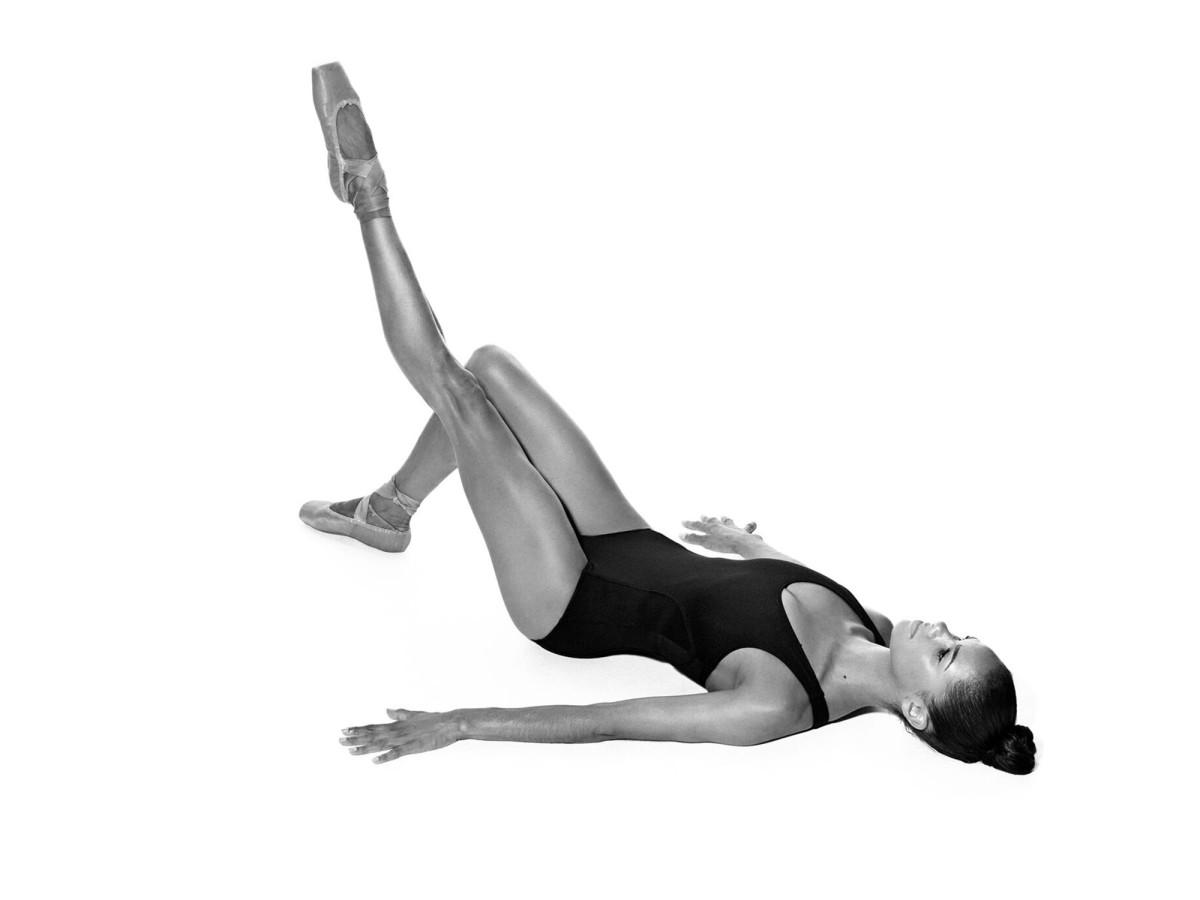
d. Pulse the stretched leg up and down, just an inch or two, several times. Use your arms, palms down, to stabilize your core.
e. Put the lifted foot on the floor and repeat, beginning with the other leg.
Dégagé
“Dégagé” means “disengaged.” When preparing for dégagés in particular, but when- ever you’re lying on the floor, you should feel like you are standing or jumping—not lying on the sand at the beach!
This exercise is good for length, strength, and alignment. Be sure to press the parts of your back and body that are touching the surface of the floor to the floor, allowing your working leg to float up, initiating the movement with your inner thighs and the backs of the legs rather than the top of your thighs (quadriceps).
a. Begin lying on your back with your feet in first position (heels together and toes apart, feet pointed).
b. Place your arms at your sides with your palms facing down; you can vary the positioning of your arms depending on what makes you comfortable, as long as your arms don’t go above your shoulders.
c. Keep your legs elongated, straight on the floor.

Ballerina Body
by Misty Copeland
Misty Copeland shares her advice for dancing and eating your way to a leaner, stronger and more graceful you.
d. Use your palms and arms by pressing them to the floor. This will help to strengthen your core and align the spine.
e. Lift one leg two or three inches from the floor, with your toes still pointed out, by pressing the standing leg (again, whether you’re standing or lying on the floor, the standing leg is the one that is not moving; it helps to maintain balance), your arms, and your head into the floor. This will help you to lift the working leg while maintaining stability throughout your body. Do four dégagés with one leg front, then switch legs and do four with the other leg front.
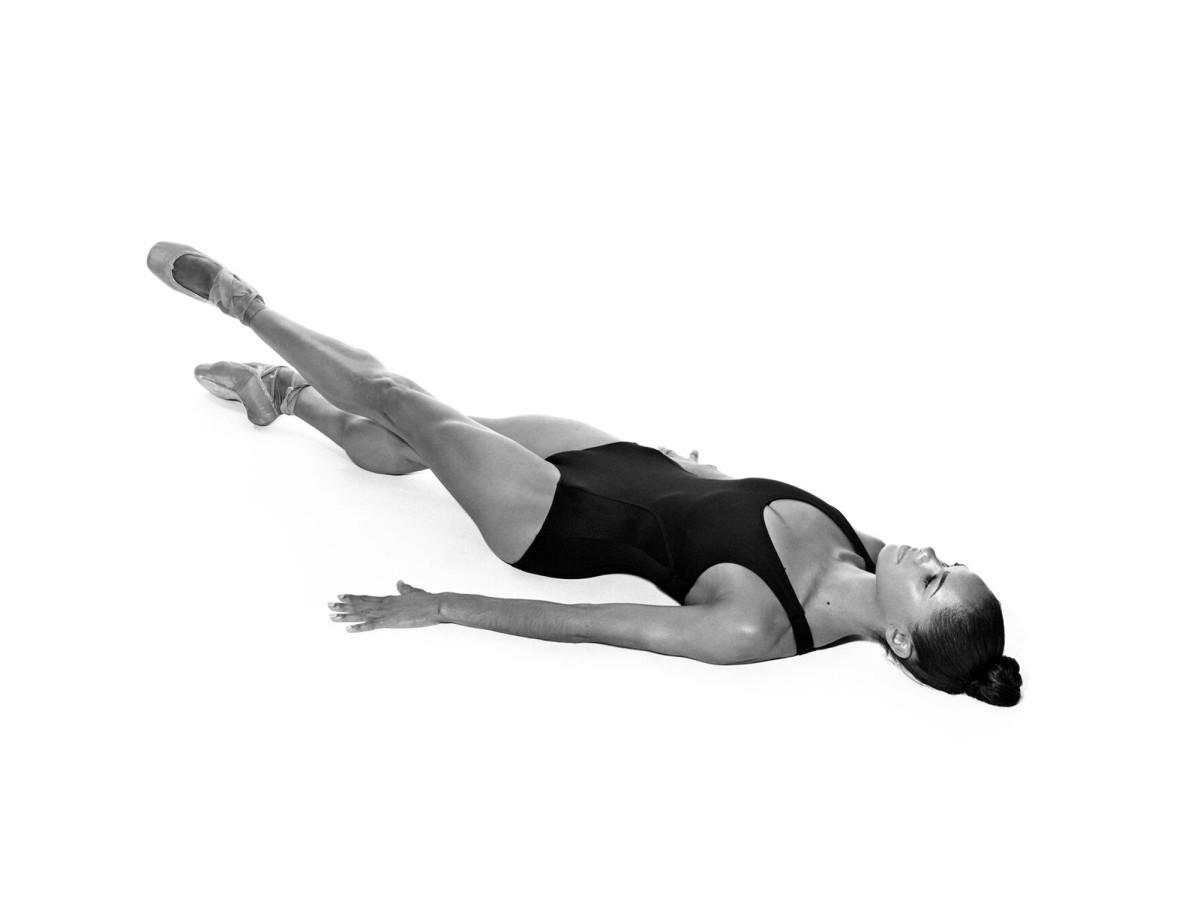
f. Now do four dégagés to each side. For these, your working leg stays on the floor, brushing along the floor as it extends to the side. Do not disturb the balance of the pelvis or the back as you move the working leg.
Seaweed
This exercise is great for freeing and lengthening the spine and for centering and strengthening the core.
a. Begin lying on your back, your legs together and parallel and your feet pointed.
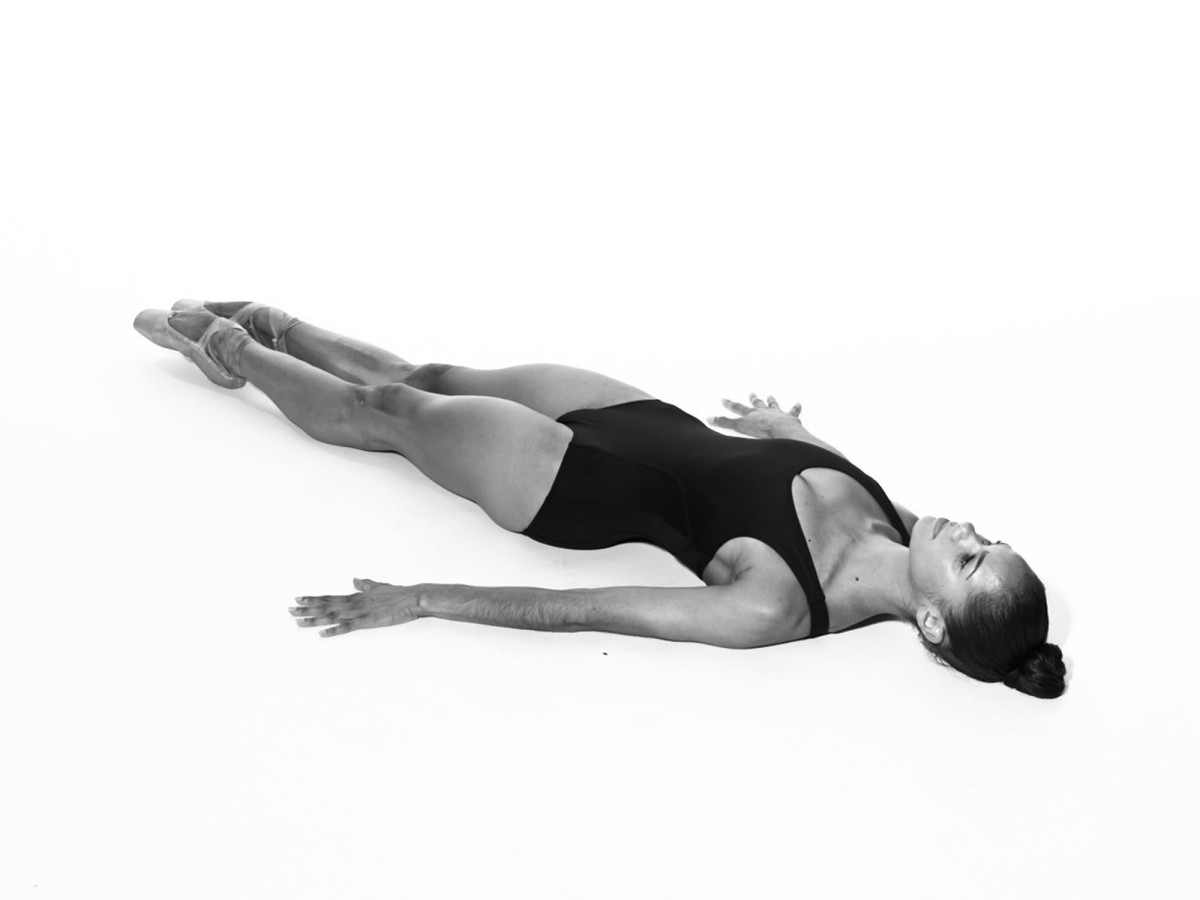
b. Bend your legs slowly, bringing them off the floor, still bent, and lifting your feet off the floor as well, while your back hugs the ground.
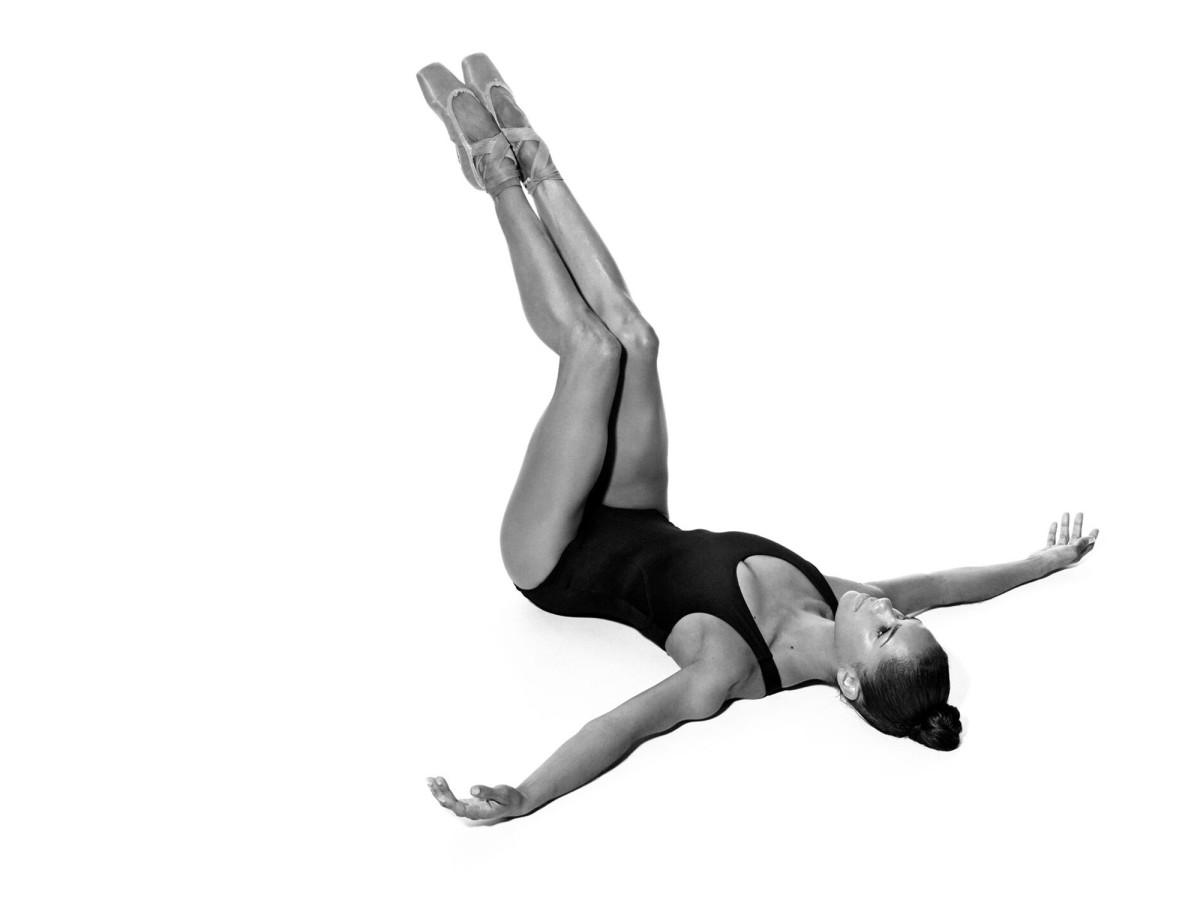
c. Keeping your lower back on the floor and your shoulder blades drawn down to- ward your waist, curl your upper back off the floor, around your lower abs. Your arms should act like seaweed being moved by the motion of the tides, around and behind your lifted legs.
d. Float your upper back and arms down to the floor, legs still bent, body still energized.
e. Repeat four times, bringing your legs gently toward your head as your core and upper body lift, igniting the lower abdominal muscles.
f. After the last time, hold one hand or wrist (depending on the length of your arms) with the other, behind your thighs.
You don't need to be a ballerina to wear Misty Copeland's Under Armour collection
g. Lengthen your legs straight into the air, pressing the backs of your legs into your arms.
h. Propel your legs to the floor, arms still around them, until you get close to the floor. Then open your arms to the sides and move them forward toward your feet, over your head.
i. Your upper back should bend forward over your legs as you transition from lying to sitting, with the backs of your hands on the floor to help stabilize and keep the backs of your legs on the floor.
j. Roll down through your spine until your back is on the floor and you are in the starting position, with your shoulders relaxed. Repeat two to four times.
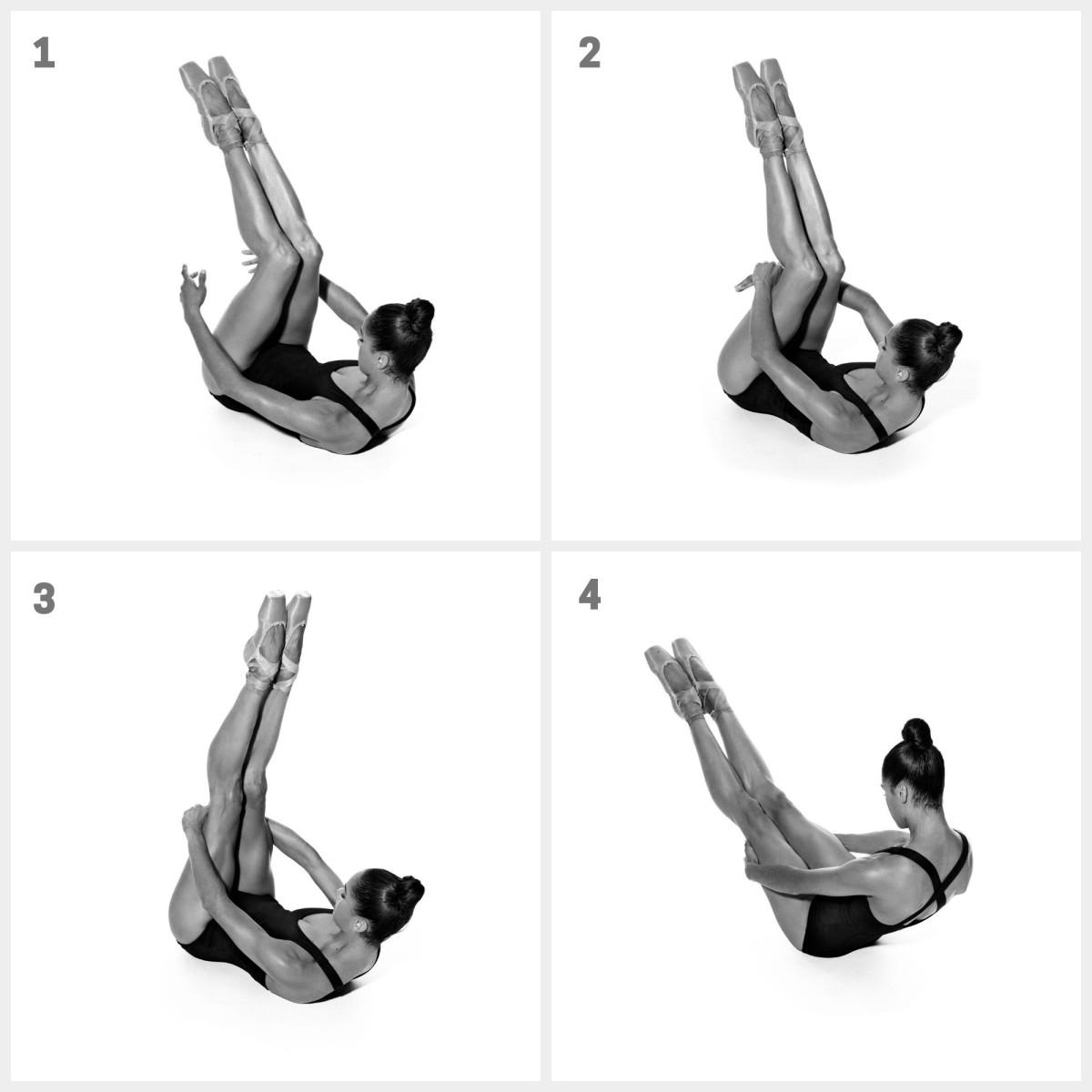
Rond de Jambe
“Rond de jambe” refers to the working leg making a circle around the standing leg. This exercise will help free the hip sockets and legs from the joints.
a. Start by lying on your back, your knees bent, both feet on the floor.
b. Lift one leg up, lengthening it toward the ceiling, with a pointed foot, until it’s at a ninety-degree angle to the floor. Turn it out. Keep your other leg bent, with your foot on the floor.
c. With the extended leg, make four small circles to the outside (en dehors), then four small circles to the inside (en dedans).
d. Then make bigger, but still controlled, circles, again four en dehors and four en dedans. Return the working leg to the floor, turned parallel, after the fourth repetition, and perform the same exercise with the other leg.
e. After repeating the sequence with the other leg, return to the starting position of two bent knees, both feet on the floor. Now lengthen your legs as you sit up. Open your legs to an open V shape (à la seconde), keeping your legs straight, as far as you can manage without feeling pain. Remember, please, do not force.
f. Stretch your body to one side, bending over that leg, then return to the center and stretch in the same way to the other side, over the other leg, flexing and pointing the feet once stretched to each side.
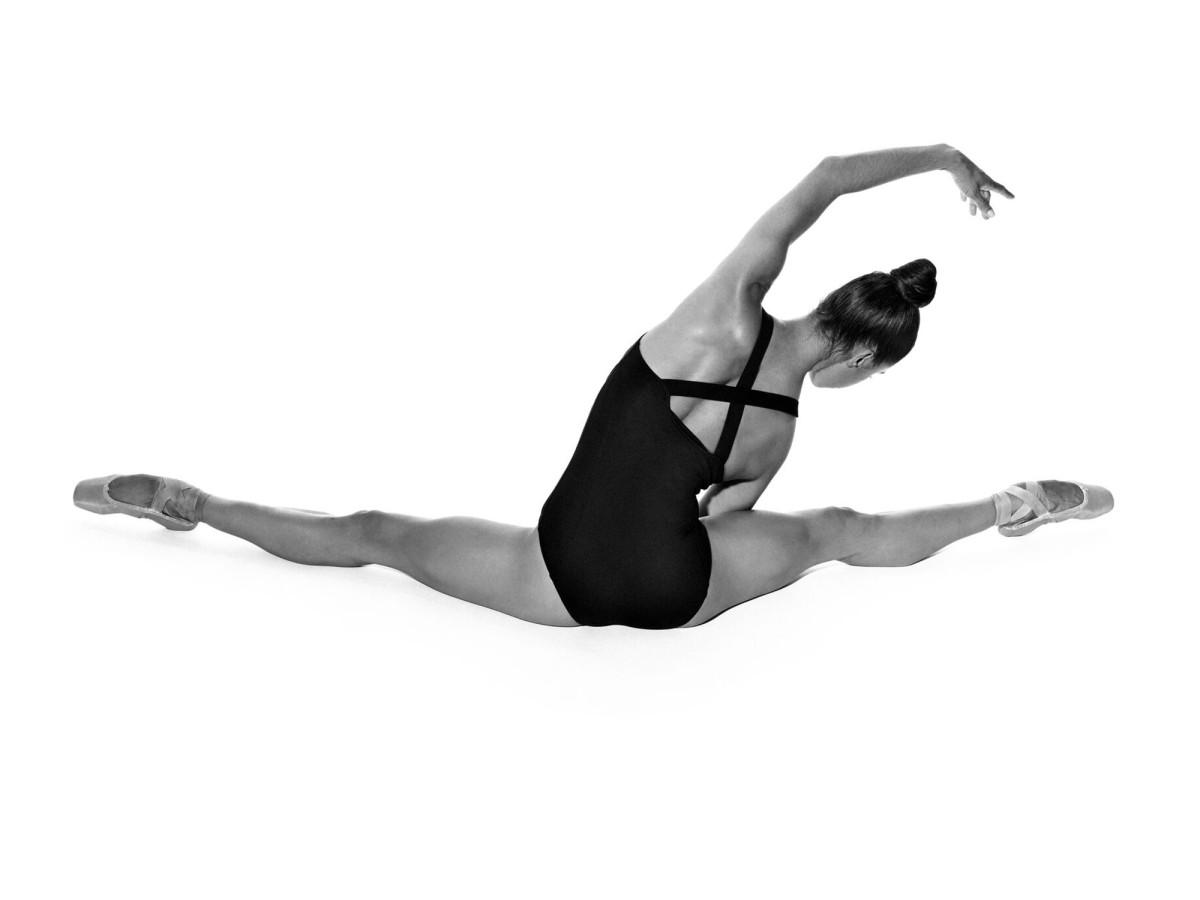
g. Sit up again and stretch forward. Now sit up and draw your legs toward each other along the floor, so that you finish with both legs straight out in front of you.
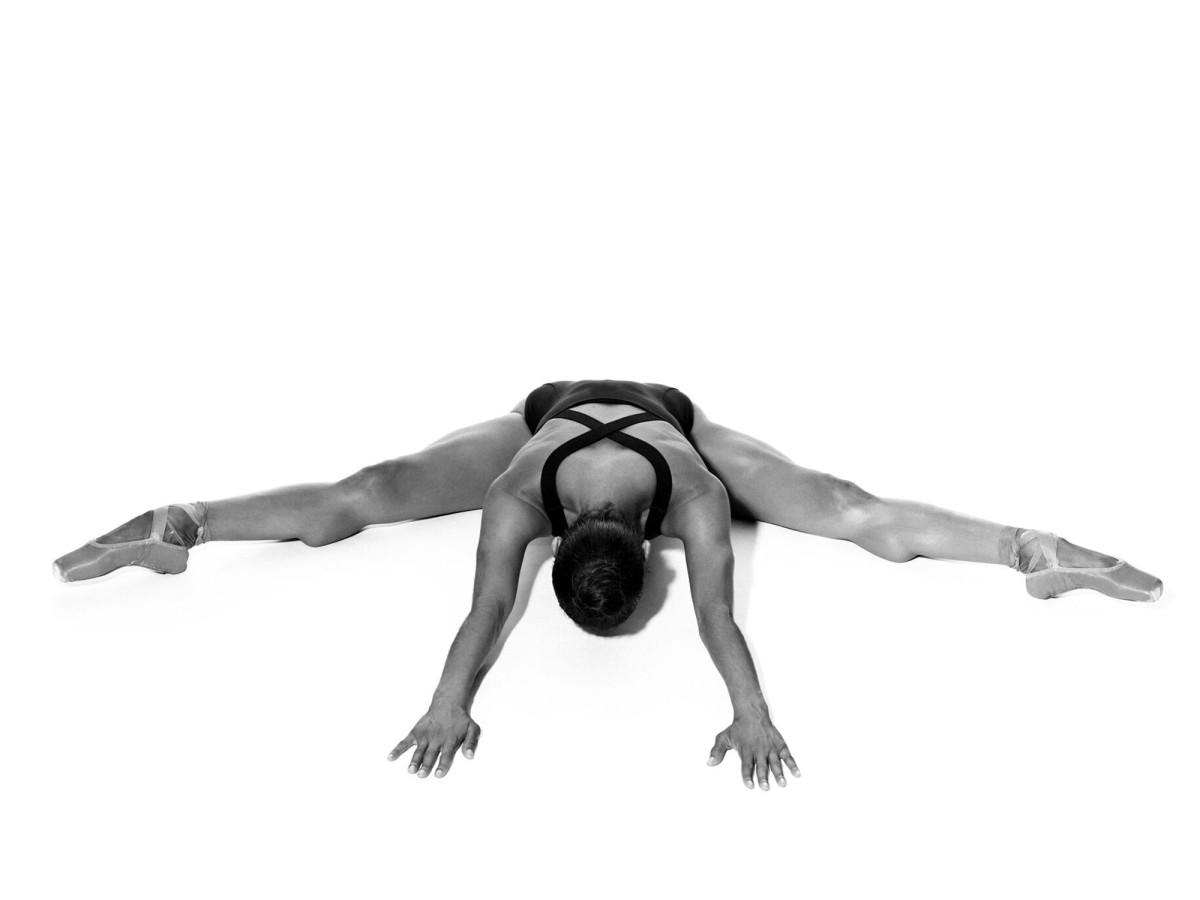
h. Finish with erect posture and a positive attitude.
Stretch
In ballet, we wait to stretch when the body is thoroughly warm after an entire session at the barre. Stretching at this point is beneficial for both elongation and cooling down. Every body is unique, requiring its own stretch, its own releases, and its own cooldowns. The same body may also require different stretches on different days. If you are very supple and loose, and you know how to do the splits correctly, this would be a good time to do them:
a. While sitting, bend forward over both legs lengthened in front of you, then opened (without force) to either side of the body. This is with the legs in second position.
b. Reach forward and stretch toward the floor, then bend over the right leg and then the left leg. Keep the backs of both legs and buttock cheeks pressed equally to the floor and bend at the waist without bending the knees to stretch the calves and the hamstrings.
c. Now lie on your stomach, legs lengthened, parallel to each other, separated and turned out.
d. Slowly push up into a back bend (back stretch), beginning with your head, bending one vertebra at a time.
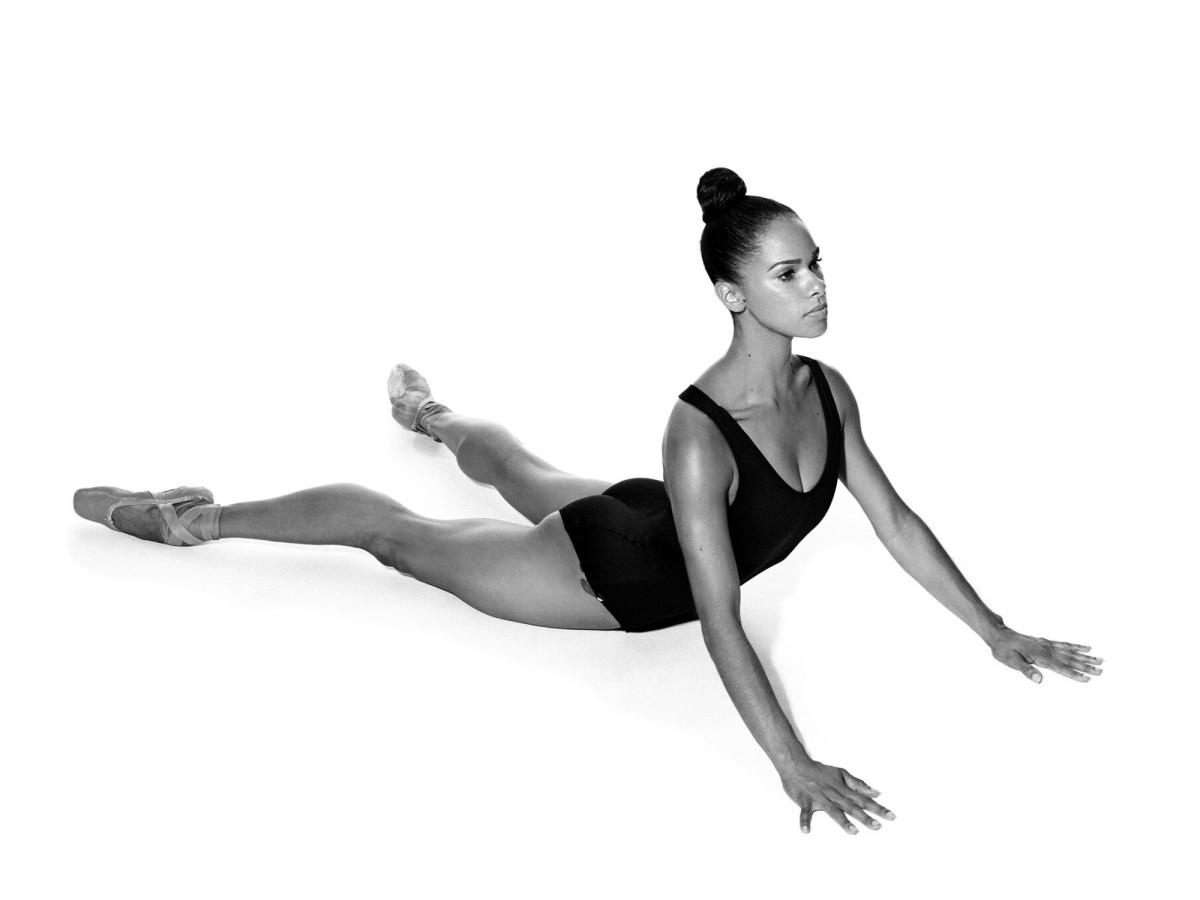
e. When coming down from the back bend, reach forward with the front of your chest (sternum) slowly until you reach the floor again, one vertebra at a time, head descending last. If you have no injuries or issues with your knees, push back and sit on your heels, with your heels remaining together under your buttocks, and put your head on the floor for relaxation. This helps to stretch the back in the opposite direction from the back bend, relieving any tension.
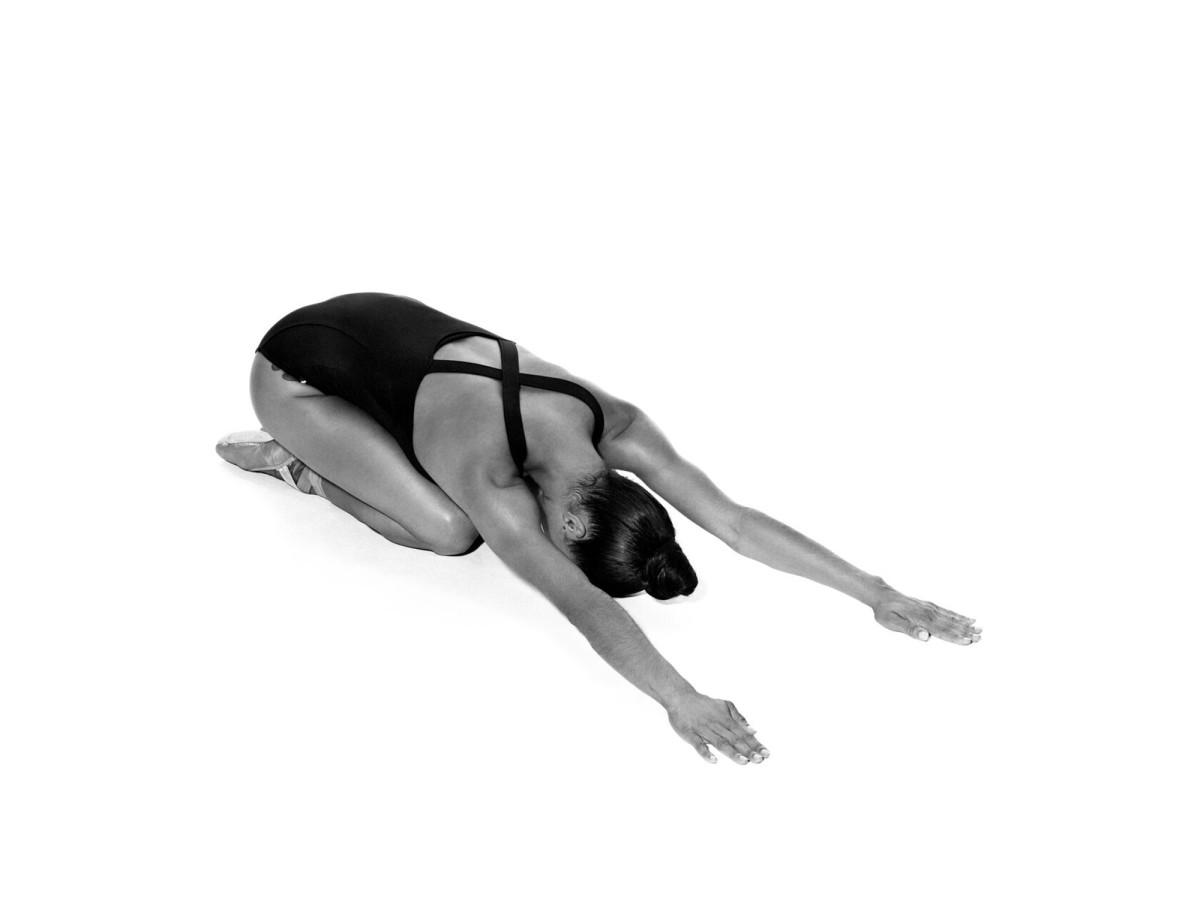
For more exercises and ballerina moves to incorporate into your next workout, check out Ballerina Body: Dancing and Eating Your Way to a Leaner, Stronger, and More Graceful You.
